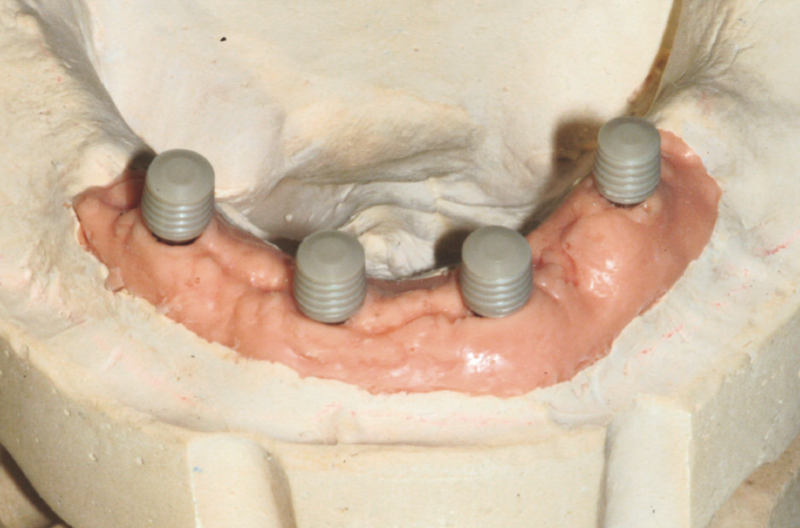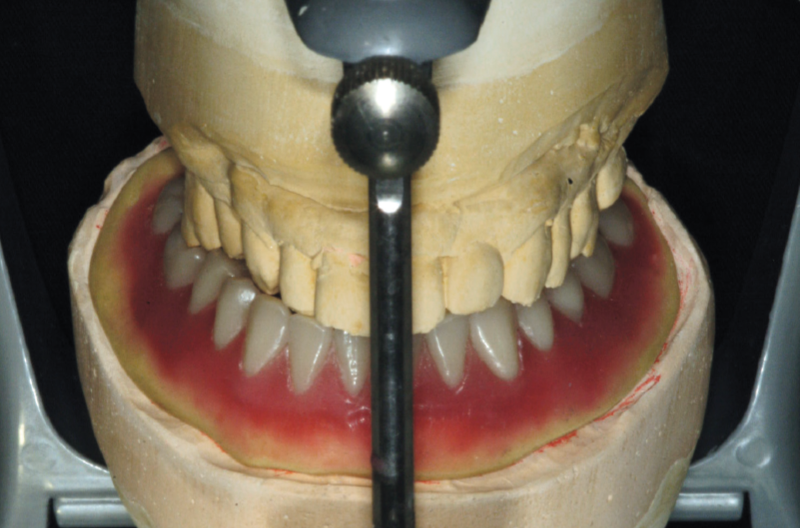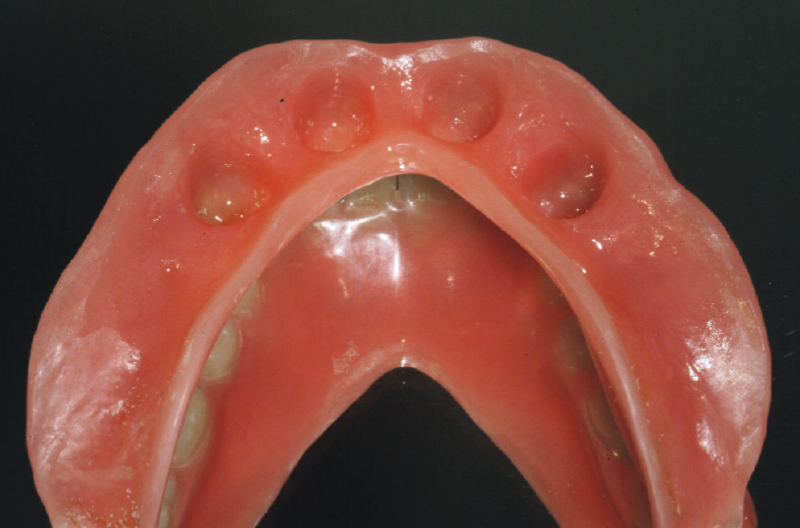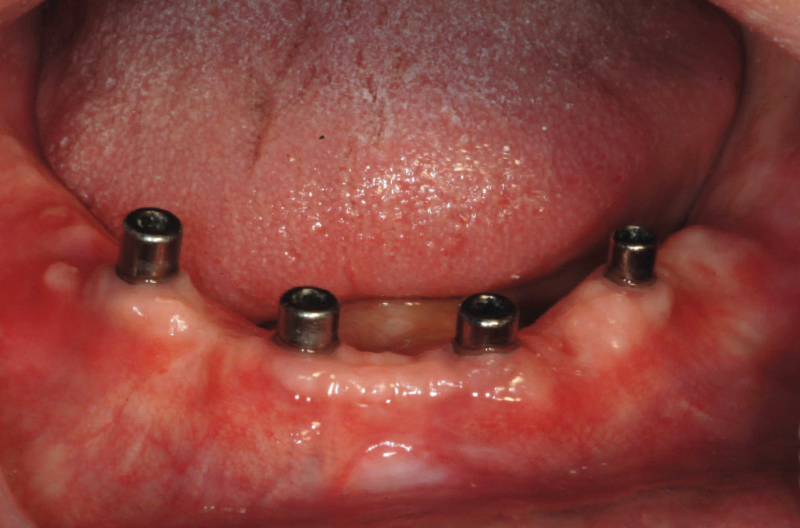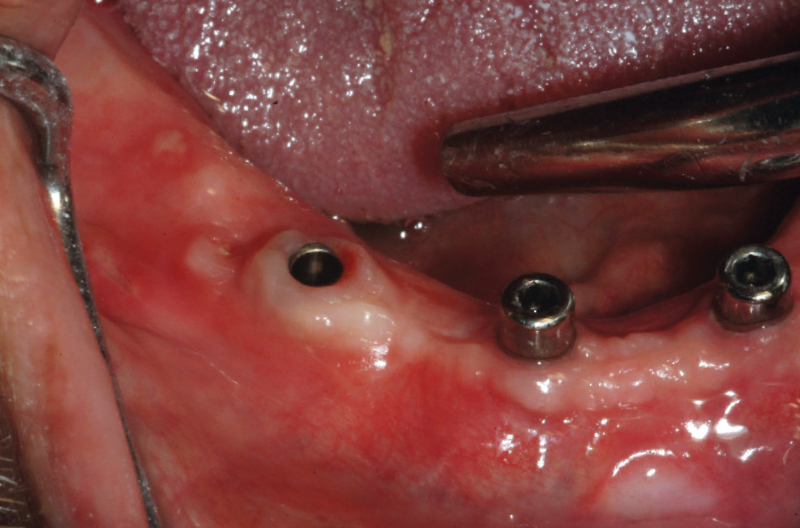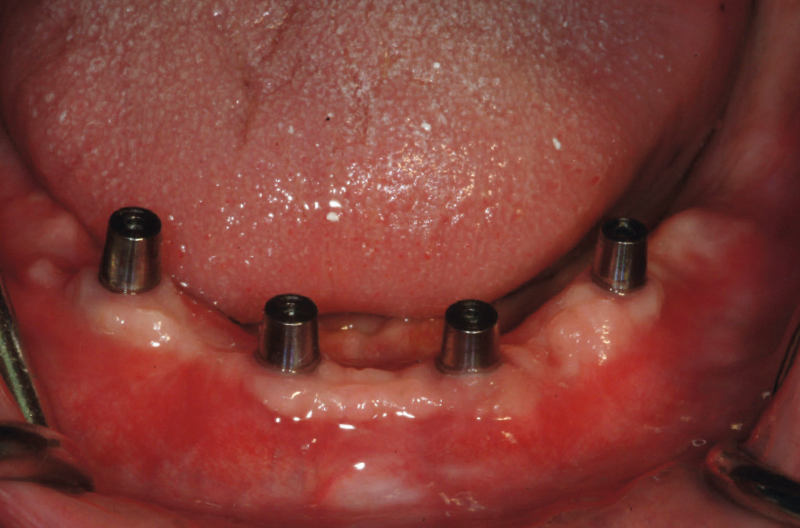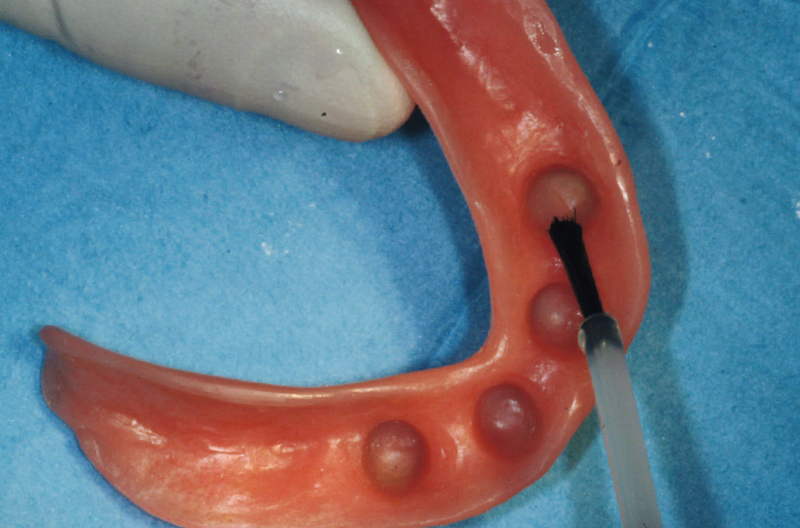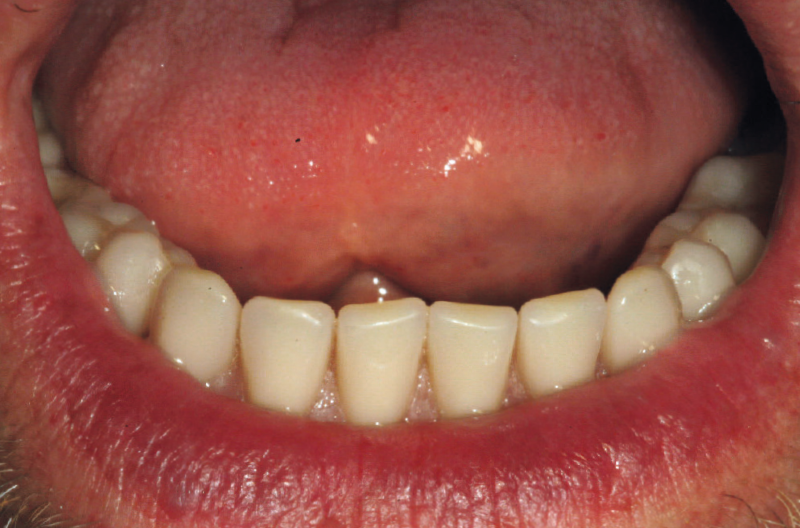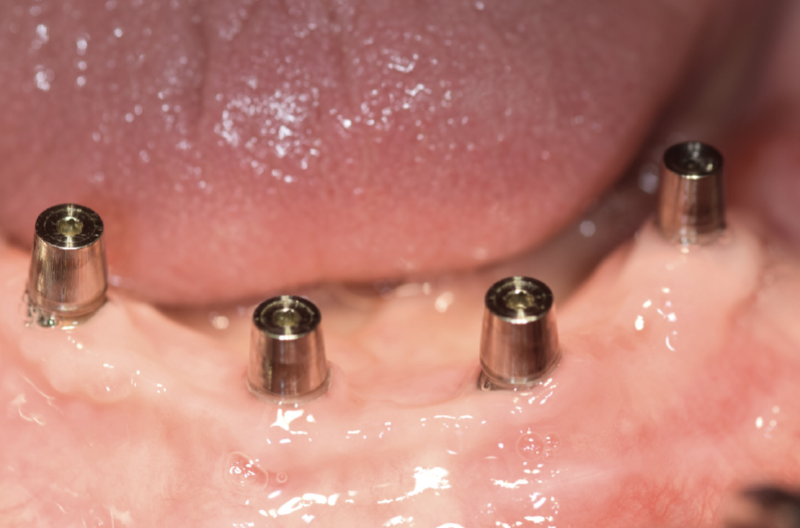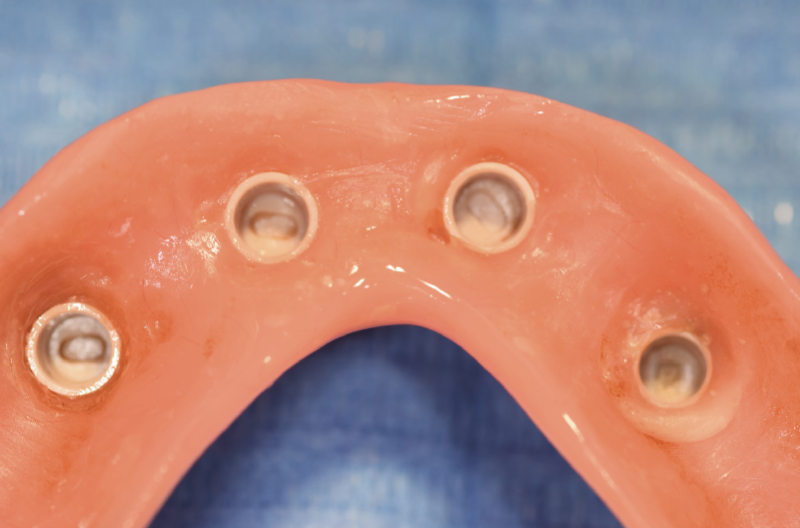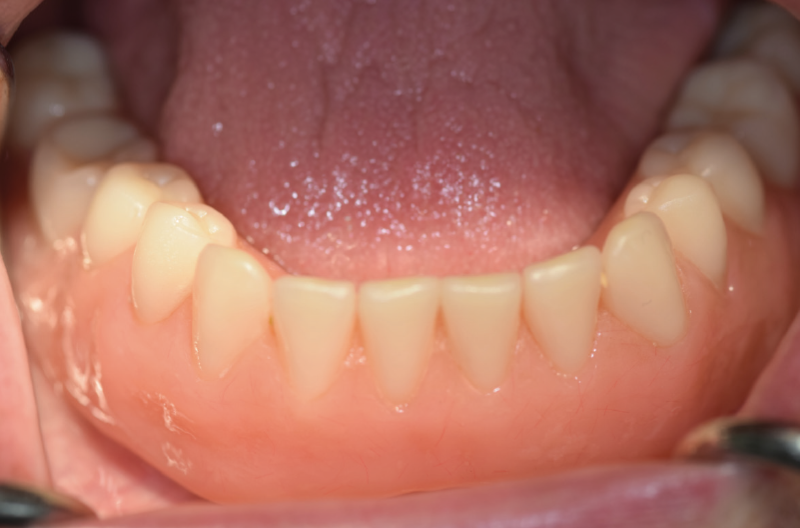Surgeon/Restorative dentist:
Dr. Leonardo Targetti – Florence, Italy
This case demonstrates the clinical and laboratory procedures for an implant-supported prosthesis with a new type of overdenture attachment system which uses conometric friction retention instead of ball attachment or Locator attachment. The conometric attachment system consists in titanium abutments (MUA-Conics), with a 5-degree (half angle) tapered top and preformed conometric caps, made of PEEK, with an internal connection with the same taper angle, which are incorporated within the overdenture.
This innovative conometric attachment system offers excellent retention giving the patient the comfort of a fixed prosthesis, while remaining easy to insert and to remove for daily hygiene. The conometric caps are fabricated in PEEK and thus almost wear-free. Conometric-retained overdentures can also be fabricated in case of non-parallel implants thanks to straight and angled (7,5° – 15° – 25° – 35°) abutments in 4 different gingival heights with no limits on positioning (XCN® 360° connection).

Clinical situation at time of implant level impression taking: view of healing caps on three 4.1×12 mm Classix Leone implants and one 3.3×12 mm Classix Leone implant 
Occlusal view of the provisional overdenture 
Ridge-side view of the provisional overdenture: the denture base was relieved over the healing caps and relined 
Ridge-side view of the provisional overdenture: the denture base was relieved over the healing caps and relined 
Dental cast after implant-level impression: four straight MUAs GH 1.5 mm were selected and properly tapped into the analogs 
Conic Adapter used to convert MUA into conometric abutment (MUA-Conic) 
Conic Adapters screwed onto MUAs to convert into MUA-Conics and tightened by means of the lab torque screwdriver 
Detail of two MUA-Conics 
View of MUA-Conics parallel to each other 
Mobile caps, made of PEEK, placed with decisive manual pressure onto MUA-Conics. Note that prototypes of Mobile caps were beige; today they are pink 
Mobile caps, made of PEEK, placed with decisive manual pressure onto MUA-Conics. Note that prototypes of Mobile caps were beige; today they are pink 
Fabrication of the definitive overdenture: view of the prosthesis on the articulator 
Definitive overdenture on dental cast: ready for functional and esthetic intraoral try-in 
Ridge-side view of the definitive overdenture during fabrication: bores with sufficient space for conometric caps and acrylic 
Ridge-side view of the finished definitive overdenture 
Clinical situation at time of delivery of definitive overdenture: view of healing caps 
Removal of healing caps 
MUA-Conics properly tapped into the implants 
Mobile Caps properly tapped onto MUA-Conics 
Abutment seater with straight and offset PEEK tip used to tap the abutments into the implant and to seat the Mobile Caps with a gentle tapping force on the abutments 
Adhesive application 
Adhesive application 
Application of acrylic into the bores 
Definitive overdenture placed into position in the mouth 
Ridge-side view of the finished overdenture: Mobile Caps are incorporated within the overdenture and excess acryl has been removed 
Definitive overdenture in place 
Clinical situation two and a half years after delivery of the overdenture: view of healthy and stable soft tissues 
Ridge-side view of the overdenture two and a half years after delivery: Mobile caps show no signs of wear 
Ridge-side view of the overdenture two and a half years after delivery: Mobile caps show no signs of wear 
Overdenture again in place – during two and a half years no repairs were necessary
Laboratory:
Alessandro Nannucci – Florence, Italy











